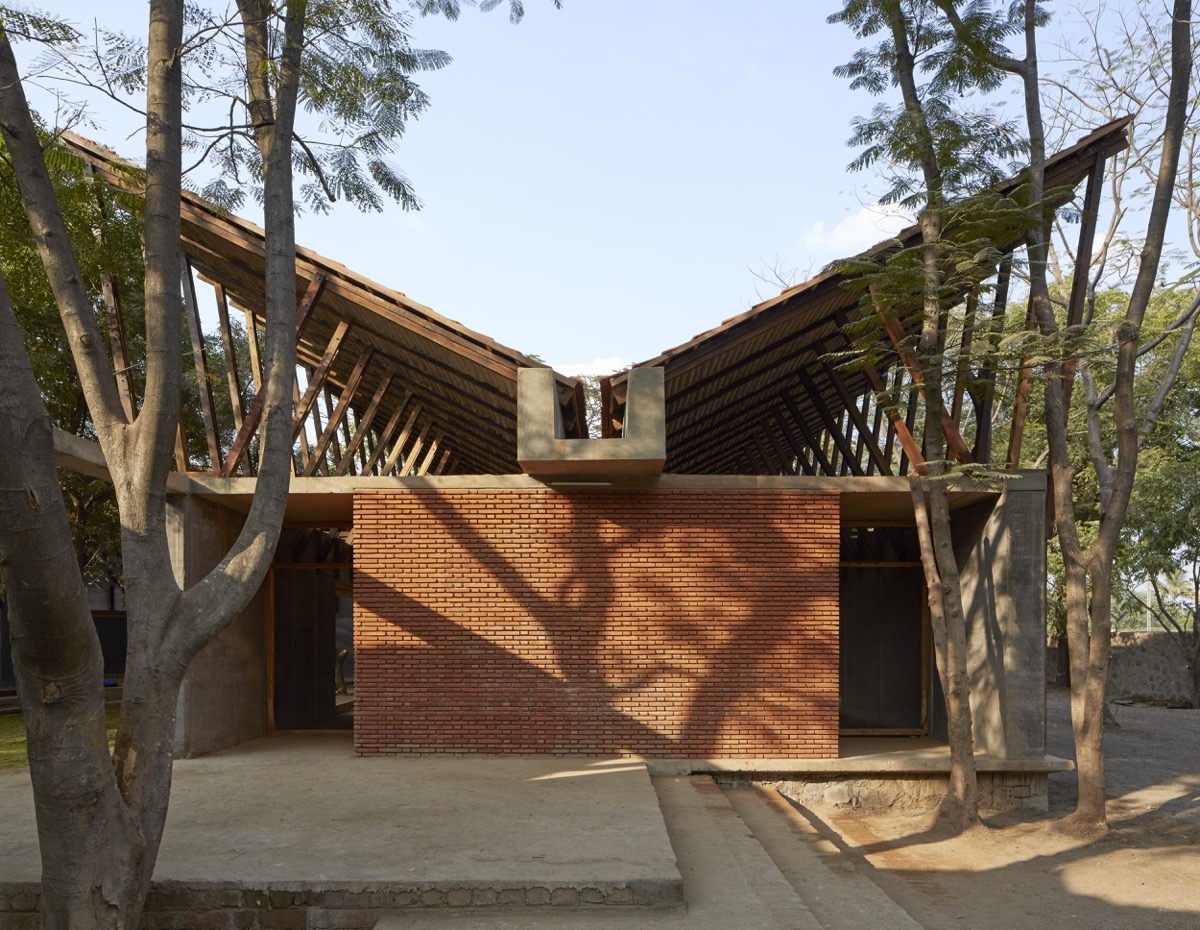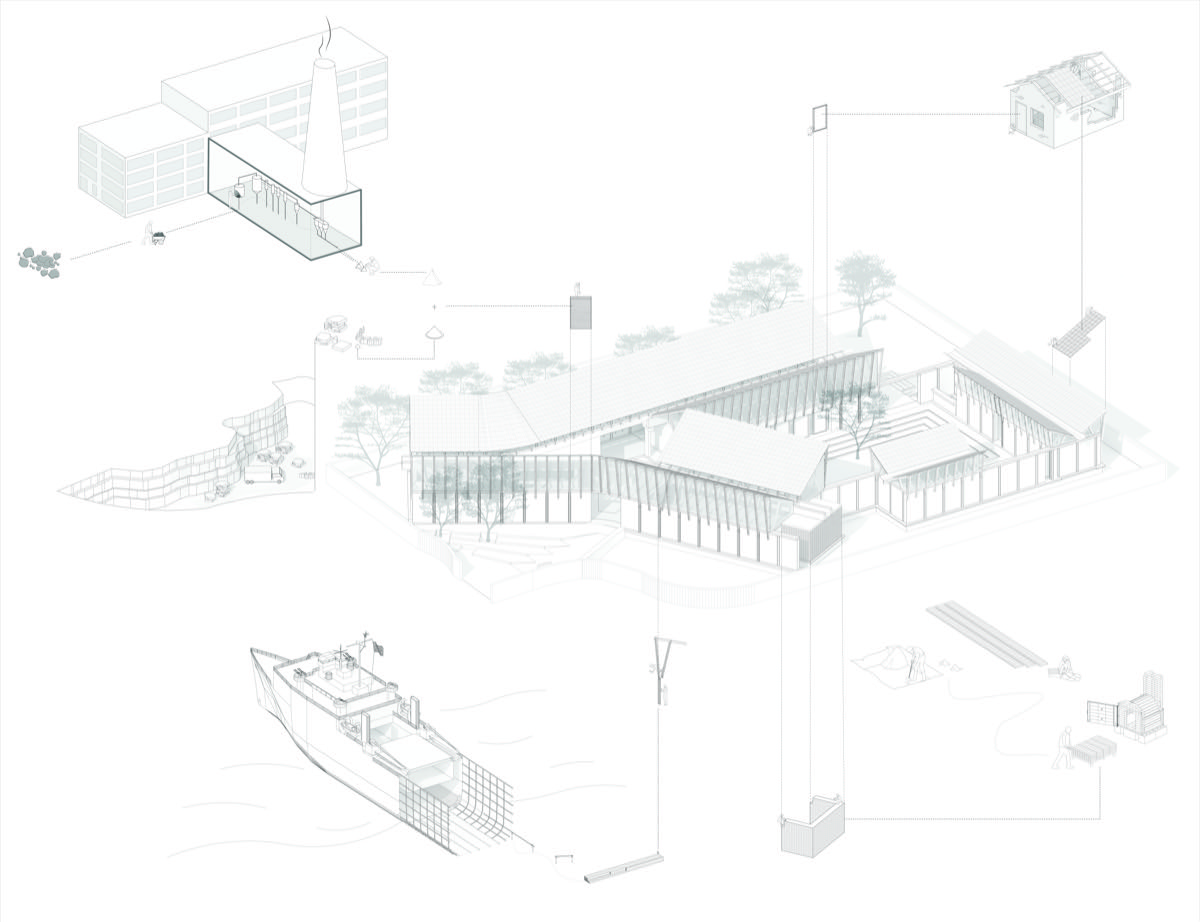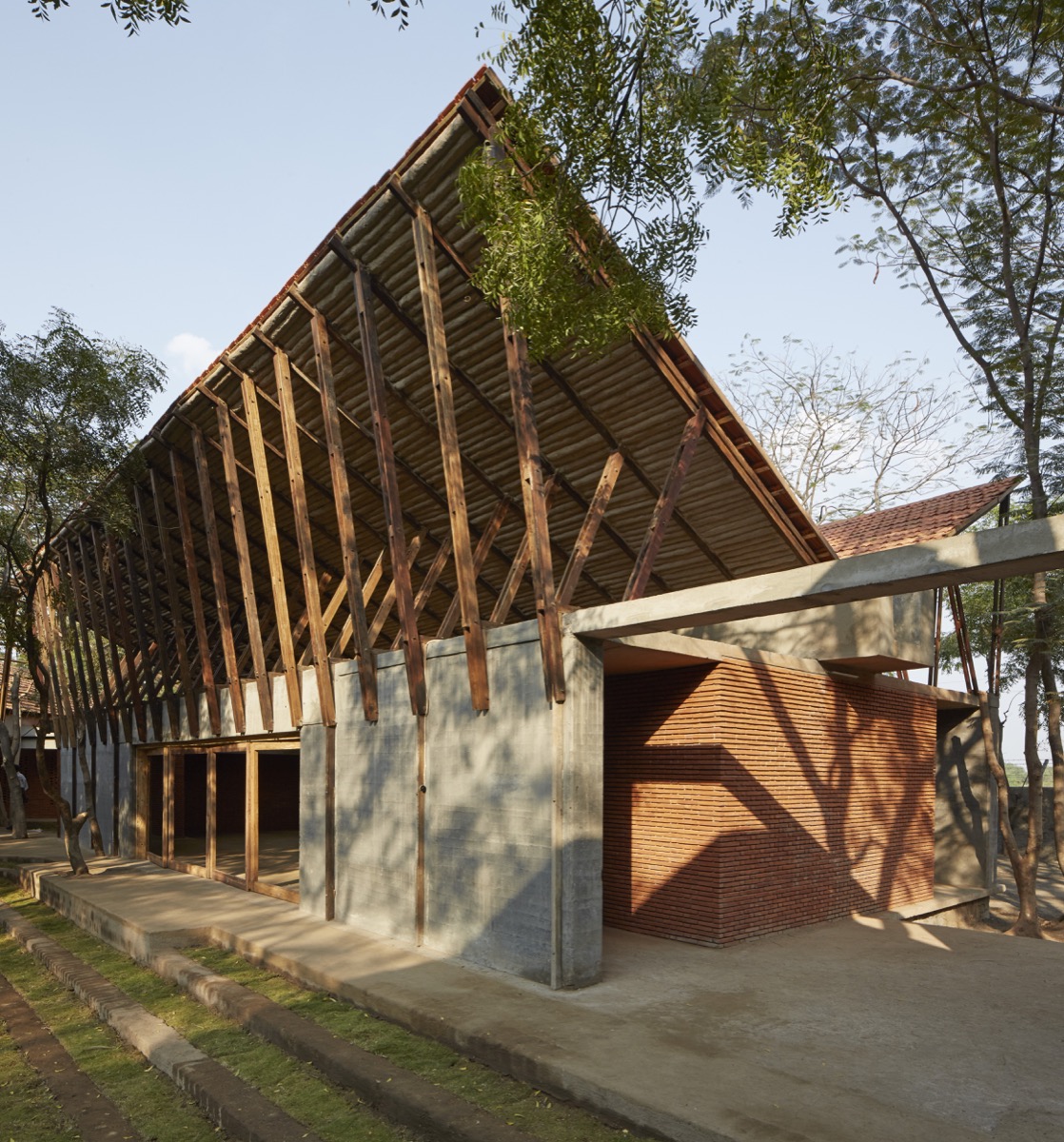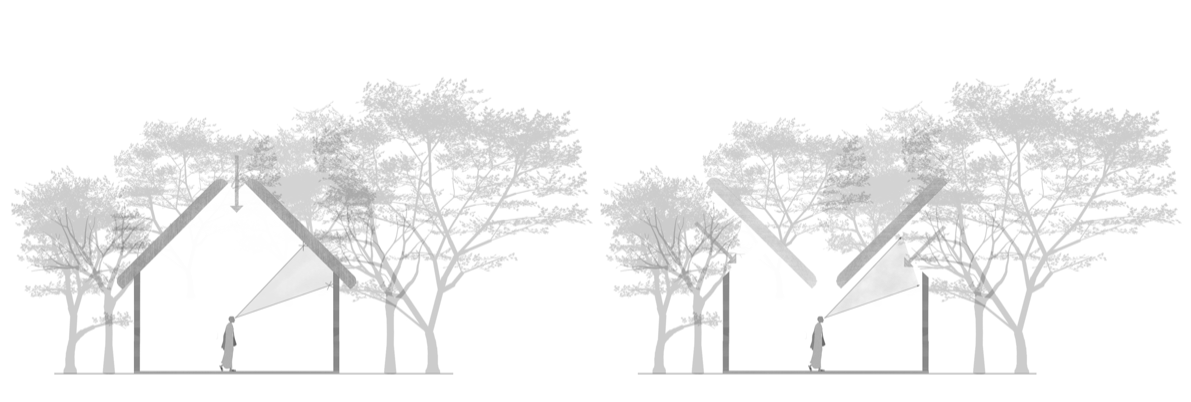
In Buddhist mythology Jetavana is the name of one of the Buddha’s most important spatial edifices which – when literally translated – means: the grove of Jeta, land donated to the sangha for founding a monastery. It was of semiotic significance that the site offered by Samir Somaiya – owner of the neighboring sugar factory in rural Maharashtra – for the Buddhist Learning Center was thickly forested, an idyllic grove of sorts.


With the mandate of not harming a single tree on site, the sizable program was split up into 6 buildings each situated in gaps between the heavy planting. Through the design process two courtyards emerged as links suturing these buildings into a common identity.


Further, by inverting the roof profile with a center valley in the middle and rising edges, the interior spaces were visually connected with the foliage outside. The interior spaces hence are also a function of the outside setting, with a lightness that belies the heavy programs on site.
The separation of the roof from the walls, while providing much needed cross ventilation, also scales the building towards the courtyard.
Working closely with Hunnarshala – an institution looking to revive and resuscitate local building traditions – we collated a material palette that uses rammed loadbearing walls of basalt stone dust. The stone dust, which is waste from a nearby quarry, is mixed with waste fly-ash, a by- product from the adjoining factory that in the past was paying people to cart the waste fly-ash away. Repurposed wood from old shipping vessels act as roof structure, with the understructure made of mud rolls, which are also great insulation. The roof itself is finished with clay roof tiles, remnants from older demolished buildings. The flooring is a traditional mud and dung floor done by members of the local community, which is known to have antiseptic properties.
Our approach to the Jetavan project attempts to extend the idea of the regional paradigm whilst separating it from the pervasive ‘image’ of what defines the local. The construction process also sets out an approach that looks to develop construction techniques based on local materiality, not necessarily used natively but appropriate for its context.
– Sameep Padora
Project facts
Client:
Somaiya Trust
Design Team:
Sameep Padora & Associates (sP+a) Aparna Dhareshwar, Kriti Veerappan, Karan Bhat
Hunnarshala: Kiran Vaghela, Tejas Kotak
Construction Team: Soudagar Kulal, Atul Kulkarni

















2 Responses
can you please remove that Dalit word its nothing like this in Buddhism. I am not understanding how can you label buddhist people as dalits . It may be there in hindu who comes under SC Category Hindus have caste system but not buddhist please remove word from your article.
Dear Pablo,
Thank you for pointing out the error. Your comment was shared with the author, and they have agreed upon removing the word ‘Dalit’ from the article. The same has been done.